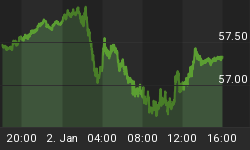Last week, Treasury Secretary Paulson and Fed Chairman Ben Bernanke faced Congressional leaders with a reported forecast that we are "literally days away from a complete meltdown of our financial system." Apparently, the politicians were stunned into a long silence.
If citizens across the country could glimpse the horror seen by the Congressmen (of which we have long warned), then widespread panic would truly be the order of the day. In particular, people will be shocked to see how Paulson's seemingly vast request to Congress for some $1 trillion is utterly dwarfed by the likely problem.
Of course, Paulson does not want to scare Congress. So he has offered them his own version of a teaser mortgage rate of just $1 trillion. The true figure will only kick in later, like one of the adjustable rate mortgages that tempted millions of optimistic home buyers. Once Congress is locked in to a "blank check", the funds will keep rolling until the presses run dry!
To put the problem into perspective, let's just consider some base statistics.
The publicly issued debt of the Unites States was, until very recently, a massive $5.3 trillion. The total debt, including non-public IOU's and unfunded obligations including social security and Medicare, is now a staggering $50 trillion! The total annual wealth generation, or GDP of America, is some $14 trillion.
Contrast those figures with the current debt problem ascribed to the reckless pursuit of predatory lending. Incidentally, predatory lending was made illegal in most states until overridden by President Bush to protect Wall Street profit opportunities.
The U.S. mortgage holdings are some $14.8 trillion, including some $3 trillion of commercial mortgages. Local government debt is some $3 trillion. But, even these gigantic figures pale in comparison beside the $20.4 trillion of consumer and corporate debt. Therefore, the total of non-Federal Government debt is some $38 trillion!
Of course, not all of it will default. All things being equal, possibly only a small proportion will fail, at least initially. But today, all things are not equal. We know that we are heading into a recession. This means that increasing amounts of debts will default.
The main problem is that predatory lending incurs a high default rate. So if only 10 percent of outstanding loans default, the Government will have to raise some $4 trillion, or more than 5 times what Congress is being asked. It will increase the U.S. Government public debt by some 80 percent.
This will threaten the triple-A credit rating of American Government debt. It will also 'crowd out' corporations and entrepreneurs from crucial debt funding. Finally, it will put upward pressure on interest rates at precisely the time when lower rates are called for to avoid recession slipping into depression.
If the economy moves into a severe recession and then depression, default rates will explode. These, in turn, will cause stock markets to implode, as they did in 1929. In addition, the U.S. dollar is likely to plummet, driving up the trade deficit in the longer term. Considering these factors, many of which the Government prefers to hide, things look bad - very bad.
It does not take a rocket scientist to see that we face a very serious situation and that the $1 trillion Paulson rescue plan, although well intentioned, is far too small and too late to avoid disaster. So what should investors do?
An old maxim is that, gold makes sense when nothing else makes sense. Today, not much does make sense. Gold is likely to explode, at least in the initial stages of panic. In a recession, cash becomes a King. In a depression, gold is an Emperor.
In the current panic, many investors are jumping on U.S. Treasury bonds as a perceived life raft. But teetering on the shaky foundation of U.S. dollars, T-bonds are a trap to be avoided. As the U.S. dollar is likely to erode fast, the sovereign debt of countries with strong currencies, such as Swiss francs, are attractive, even with a negative yield.
In these precarious times, think return of capital, not return on capital.
For a more in depth analysis of our financial problems and the inherent dangers they pose for the U.S. economy and U.S. dollar denominated investments, read Peter Schiff's book "Crash Proof: How to Profit from the Coming Economic Collapse." Click here to order a copy today.
More importantly, don't wait for reality to set in. Protect your wealth and preserve your purchasing power before it's too late. Discover the best way to buy gold at www.goldyoucanfold.com, download our free research report on the powerful case for investing in foreign equities available at www.researchreportone.com, and subscribe to our free, on-line investment newsletter at http://www.europac.net/newsletter/newsletter.asp.
















